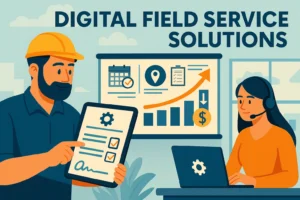Benefits of employee scheduling software
In the lively world of restaurants, many may not realise that smooth operations are underpinned by the meticulous art of shift management. Every dining rush, last-minute booking, and bustling evening depend on having the right person at the right spot exactly when necessary. Traditional methods such as pen and paper or basic spreadsheets might do the trick for smaller teams, but as establishments grow and menus expand, these approaches can lead to errors, overlapping shifts, and wasted time. This is where a modern approach to employee scheduling makes a significant difference.Digital employee scheduling tools not only simplify the task of assigning shifts, but also bolster overall productivity. By leveraging technology, these systems automate many tedious administrative tasks, freeing up managers to focus on crafting memorable customer experiences. With smart features that account for everything from shift templates and employee availability to personal shift preferences and roles, these programs are transforming how restaurants operate. They contribute to content staff and refined operations by avoiding costly mistakes and streamlining day-to-day activities.
Streamlining Restaurant Operations
One of the biggest advantages of using employee scheduling is its capability to streamline hectic restaurant operations. When every moment is crucial, automating the creation of detailed shift templates and schedules saves valuable time. Instead of spending hours going over spreadsheets, managers can simply enter core parameters—such as labour forecasting data or integration with POS systems—and let the software craft an efficient roster. This not only cuts down the time spent on manual planning but also greatly reduces the likelihood of overlap or errors.Digital scheduling tools function by considering employee availability, roles, and even requests for overtime control. For instance, a manager might inadvertently double-book a head chef or schedule someone during a predicted rush, but with employee scheduling software, these issues are a thing of the past. The system cross-checks every detail to ensure that staff is optimally deployed, keeping the restaurant running smoothly even during peak times.Real-time notifications and compliance alerts embedded within these tools ensure that every team member stays updated on any scheduling changes. This level of instant communication simplifies handling last-minute adjustments, alleviating the stress often associated with traditional schedule creation methods.
Improving Staff Morale with employee scheduling software
When workers feel they have a say in crafting their work hours, they naturally take more satisfaction in their jobs. Well-designed employee scheduling software empowers staff by opening channels for shift swapping, availability requests, and easy updates. This method not only smooths out scheduling but also builds trust within the team, as everyone can see how decisions are made and adjust their plans accordingly.Consider a server needing to attend an important family function. With a user-friendly drag-and-drop scheduler, they can effortlessly request a shift change or swap with a colleague. This flexibility works wonders in balancing personal time and work obligations, reducing stress and enhancing overall job satisfaction. When employees see their needs reflected in the schedule, mutual respect grows, often leading to improved customer care and better feedback from diners.Transparent scheduling also enables managers to integrate other elements, like overtime control and compliance alerts, ensuring every staff member's workload is fair. Over time, this enhanced engagement results in higher retention, fewer unscheduled absences, and a work culture where everyone feels valued.
Enhancing Productivity and Efficiency
At its core, the aim of any business tool is to improve productivity, and modern employee scheduling software does exactly that. These systems are crafted with user-friendly interfaces that let managers swiftly set up and adjust schedules. Whether it’s adding more hands during a busy dinner or scaling back during quieter times, precise resource allocation fuels better service. Additionally, the software often incorporates labour forecasting algorithms to predict when extra support may be necessary.Restaurant managers can also reap benefits from the software’s data-crunching abilities. Historical dining trends, peak hours, and staff performance indicators help shape a schedule that optimises every shift. Featuring POS integration and real-time analytics confirming the data, the system can flag when to add more servers or shut down a shift, significantly cutting back on wasted labour costs.Furthermore, with an automated drag-and-drop scheduler at hand, errors like overlapping shifts or under-staffing are promptly flagged. This proactive adjustment ensures that the entire team functions smoothly, thus boosting both productivity and the quality of customer service.
Choosing the Right Scheduling Software
Features to Consider
Choosing a scheduling system for your restaurant involves pinpointing the features that best suit your needs. It’s not just about creating a digital roster—it’s about selecting a tool that syncs with your current systems while allowing for future growth. Key features to watch for include:
- Real-time Updates: Ensuring every change is instantly reflected so that everyone remains informed.
- Mobile Access: Allowing both managers and staff to review and acknowledge updates no matter where they are.
- Payroll Integration: Syncing work hours with your existing payroll system to avoid data entry errors.
- AI Capabilities: More sophisticated tools even use labour forecasting to predict busy shifts and adjust rosters in advance, working alongside features like compliance alerts to keep everything in check.
Investing in a system with these features turns scheduling into a dynamic management hub. It even paves the way for automation in other areas such as POS integration and overtime control, ensuring your restaurant is always running at peak efficiency. Such a tool not only saves money but also forms the backbone of a more predictive and smart work environment.
Ease of Use and Onboarding
User friendliness is crucial when selecting scheduling software. A system that’s clear and simple—featuring intuitive navigation and straightforward layouts—quickly earns the team’s trust. A drag-and-drop scheduler, paired with an interface using vivid colour codes for different shifts, simplifies adaptation without wasting time on complex processes.Often, these systems come with trial periods, video tutorials, and detailed guides. Testing the software during quieter cycles can reveal any hidden issues before full deployment. Quick fixes, interactive demos, and reliable customer support streamline the transition from old, manual methods to the modern world of employee scheduling.When a scheduling tool includes modern features like compliance alerts and overtime control right from the get-go, it becomes easier for the entire team to embrace these changes. Ultimately, choosing a software solution that’s easy to understand and use makes a significant difference in keeping operations smooth and staff content.
Room for Growth
As your restaurant grows, so will your scheduling requirements. It’s important to invest in a solution that can evolve with you—one that manages everything from small teams to multiple locations smoothly. Scalability isn’t just about managing more shifts; it’s about supporting complex scheduling needs as you expand.For example, a restaurant that starts as a single outlet but later opens more branches will require a centralised tool capable of managing multiple rosters concurrently. A scalable system can integrate new modules—like advanced labour forecasting or POS integration—and adapt to more nuanced scheduling patterns over time without requiring a complete overhaul.Moreover, a flexible solution sets the groundwork for future upgrades. With restaurant technology continuously evolving, having a software platform that can incorporate extra features, including enhanced compliance alerts or improved overtime control, ensures your operational foundation remains stable and future-ready.
Implementing Scheduling Software
Training and Onboarding Your Team
The path to fully leveraging modern employee scheduling begins with proper onboarding. Once the right tool is selected, it’s essential to introduce it to each team member in a way that alleviates any fears of change. Comprehensive training sessions, thorough tutorials, and continuous support simplify the learning process for staff.Many providers understand the challenges of switching from established methods, so they offer robust support through video walkthroughs, step-by-step guides, and even in-person training if necessary. Organising short workshops during quieter shifts can help everyone get hands-on experience with features like a drag-and-drop scheduler or accessing shift templates.A key aspect of this rollout is promoting open dialogue. Encouraging team members to raise any concerns or questions builds trust and cultivates a shared commitment to making employee scheduling successful for everyone. This transparent approach can smooth the transition, making the shift to a digital solution both seamless and rewarding.
Monitoring Performance and Collecting Feedback
After implementation, the next step is regular monitoring and gathering feedback. Consistent check-ins help assess if the system is meeting expectations. Setting up routine surveys, quick post-shift discussions, or feedback sessions allows staff and managers to share their experiences. This feedback loop is crucial for fine-tuning the software and addressing issues such as slow mobile updates or unclear shift assignments.It’s advisable to track key metrics like real staffing levels versus planned rosters, and any improvements in service. Data-driven insights, often enhanced by tools like labour forecasting dashboards, ensure that the software's impact is both visible and measurable. Reviews may reveal that features like overtime control and compliance alerts need slight adjustments, sparking quick fixes from the support team.Maintaining open communication about the software's performance leads to ongoing enhancements that keep the scheduling process efficient and adaptable to your restaurant's evolving needs.
Adapting to the Unexpected
The restaurant industry is full of surprises—from seasonal rushes to unforeseen staff absences. Modern employee scheduling software is crafted to manage these fluctuations with speed and flexibility. Whether it’s an unexpected shortage during a busy night or a sudden shift in customer flow, the tool promptly adjusts rosters without a hitch.For example, if several employees call in sick on a hectic evening, the system can instantly flag available team members. With features like compliance alerts and real-time updates, the software helps rearrange shifts and reassign duties within minutes. This swift response is vital to maintaining service quality and keeping customers happy during unpredictable moments.Moreover, many modern scheduling platforms use historical data and trends to anticipate peak times, incorporating labour forecasting to prepare for expected spikes. This proactive stance ensures that even before the rush hits, extra staff are lined up based on data-driven predictions. Adapting to change promptly not only minimises disruption but also guarantees that customer service remains top-notch, no matter what surprises the day brings.
Conclusion
Switching to digital employee scheduling software can truly transform how your restaurant manages shifts, enhancing both service quality and staff satisfaction. By automating intricate tasks like creating shift templates and managing overtime control, the process becomes faster and more precise. The positive ripple effects include streamlined daily operations, fewer scheduling errors, and an uplifting work environment where employees feel recognised and valued.Beyond the evident time savings, modern employee scheduling software provides measurable benefits like enhanced productivity and stronger team communication. By integrating features such as POS integration, compliance alerts, and a drag-and-drop scheduler, the software creates a robust framework for a restaurant's daily operations and future growth.In today’s ever-evolving food scene, investing in a solid employee scheduling system offers a competitive edge. Not only does it help prevent potential errors and cut labour costs, but it also nurtures a culture where every team member can thrive. Embracing such a tool today lays the groundwork for a vibrant future where both management and staff grow together.Ultimately, deciding to transition to an automated employee scheduling tool is a smart investment for any bustling restaurant. With clear advantages in streamlining shift plans, enhancing communication, and supporting business growth, this modern approach promises long-term rewards. So, take the plunge and allow your restaurant to benefit from technology that truly understands the pulse of a bustling dining environment.
Daria Olieshko
A personal blog created for those who are looking for proven practices.

 English (US)
English (US)  English (GB)
English (GB)  English (CA)
English (CA)  English (AU)
English (AU)  English (NZ)
English (NZ)  English (ZA)
English (ZA)  Español (ES)
Español (ES)  Español (MX)
Español (MX)  Español (AR)
Español (AR)  Português (BR)
Português (BR)  Português (PT)
Português (PT)  Deutsch (DE)
Deutsch (DE)  Deutsch (AT)
Deutsch (AT)  Français (FR)
Français (FR)  Français (BE)
Français (BE)  Français (CA)
Français (CA)  Italiano
Italiano  日本語
日本語  中文
中文  हिन्दी
हिन्दी  עברית
עברית  العربية
العربية  한국어
한국어  Nederlands
Nederlands  Polski
Polski  Türkçe
Türkçe  Українська
Українська  Русский
Русский  Magyar
Magyar  Română
Română  Čeština
Čeština  Български
Български  Ελληνικά
Ελληνικά  Svenska
Svenska  Dansk
Dansk  Norsk
Norsk  Suomi
Suomi  Bahasa
Bahasa  Tiếng Việt
Tiếng Việt  Tagalog
Tagalog  ไทย
ไทย  Latviešu
Latviešu  Lietuvių
Lietuvių  Eesti
Eesti  Slovenčina
Slovenčina  Slovenščina
Slovenščina  Hrvatski
Hrvatski  Македонски
Македонски  Қазақ
Қазақ  Azərbaycan
Azərbaycan  বাংলা
বাংলা 

